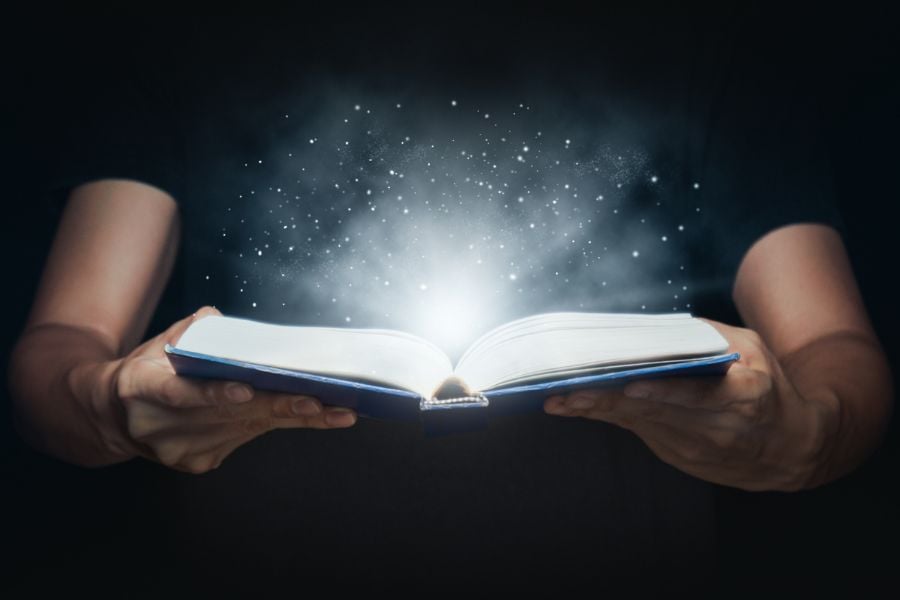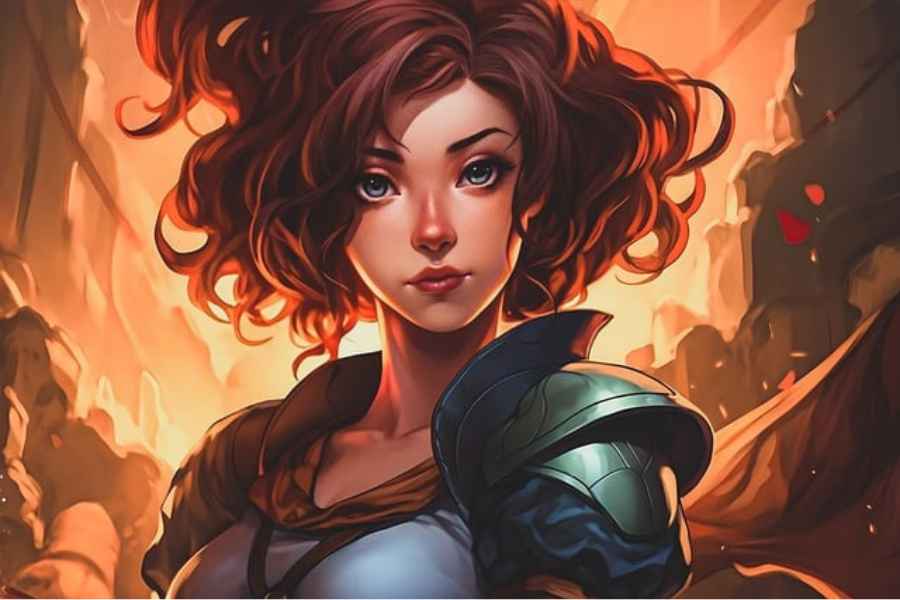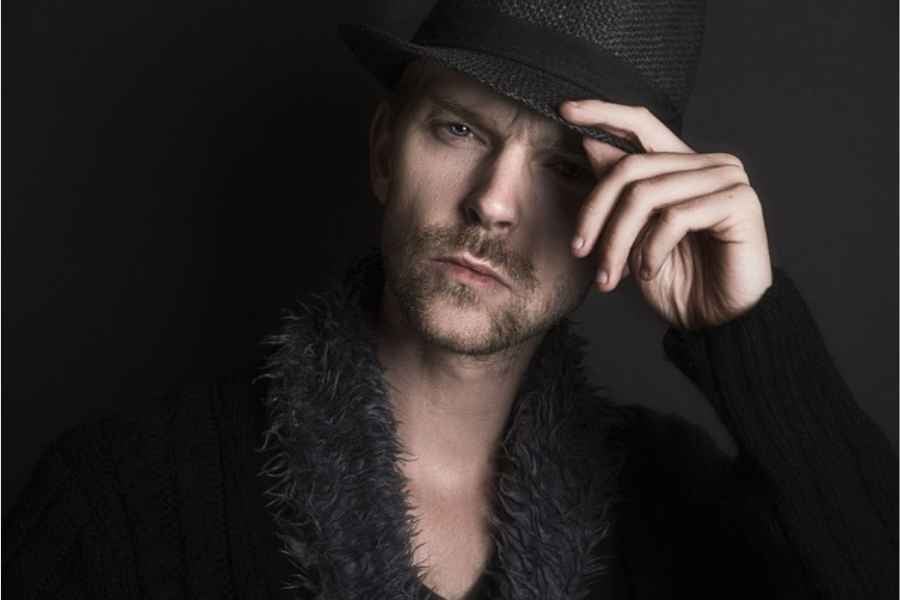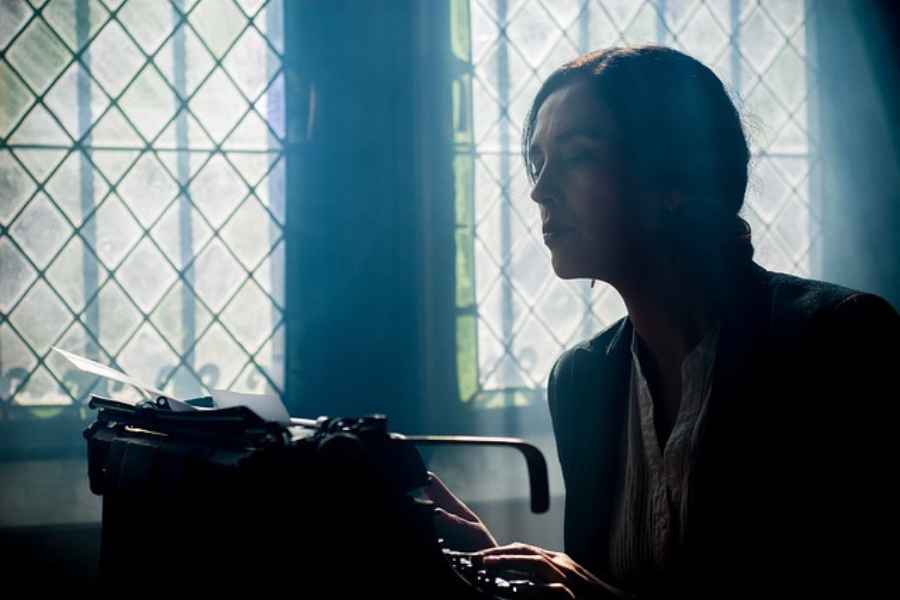From heroes who defy the odds to antiheroes grappling with moral dilemmas, a well-written protagonist makes a story unforgettable.
As an avid fiction reader, I’ve met my share of these compelling characters. And in this post, I’ll share over 25 protagonist examples and give you a few strategies for crafting your own.
Ready to get meet some magnetic main characters?
Let’s get started.

What are Protagonists & Why Do They Matter?
The term “protagonist” traces back to ancient Greece, referring to the main actor in a drama.
The protagonist’s journey and decisions shape the story, often reflecting facets of ourselves, making them the bridge between the audience and the narrative.
But a protagonist isn’t just the main character. They are often defined by the following characteristics:
- Agency: Making choices that directly impact the story.
- Relatability: Evoking empathy from the reader, enhancing the bond between the narrative and its audience.
- Growth: Undergoing transformations throughout the narrative.
- Goal-Driven: Having clear aspirations that direct the story.
- Conflict Interaction: Engaging deeply with the story’s main conflicts.
- Multi-dimensionality: Showcasing complex layers, making them neither purely good nor entirely evil.
For writers, crafting a multi-dimensional protagonist is vital. They not only elevate the narrative but also connect deeply with readers, making stories memorable and impactful.
The Most Popular Types of Protagonists (With Examples)

Every protagonist is a unique blend of characteristics, molded by their backstory, environment, and choices.
Let’s dissect a few types:
The Hero Protagonist
The hero protagonist is the classic champion of a story, often embarking on a quest or facing significant challenges, demonstrating virtues like courage, resilience, and morality.
They stand up for what’s right, even if the odds are stacked against them, making them a beacon of hope for readers and viewers alike.
Examples:
- Luke Skywalker from Star Wars: A young farm boy from Tatooine who rises against the Empire, becoming one of the greatest Jedi Knights.
- Harry Potter from the Harry Potter series: The Boy Who Lived faces off against dark forces, undergoing immense growth as he learns about his past, love, and sacrifice.
- Frodo Baggins in The Lord of the Rings: A humble hobbit tasked with the immense responsibility of destroying the One Ring, showcasing immense courage and tenacity.
- Katniss Everdeen from The Hunger Games: Thrown into a deadly game, Katniss stands out not just for her survival skills but for her compassion and determination to spark a revolution.
- Simba in The Lion King: A young lion who, after being driven away from his home, returns to reclaim Pride Rock from the clutches of his uncle, Scar.
The Villain Protagonist

The villain protagonist flips the traditional narrative by placing a character with malevolent intentions or questionable morality at the story’s forefront.
They primarily engage in malevolent actions, often without redeemable qualities, and their narrative is driven by their villainy.
Readers or viewers may find themselves conflicted — rooting for this character even while disapproving of their actions.
Examples:
- Sweeney Todd from Sweeney Todd: The Demon Barber of Fleet Street: A vengeful barber who resorts to murder and turns his victims into pie fillings in collaboration with his sinister partner, Mrs. Lovett.
- Tom Ripley in The Talented Mr. Ripley: An opportunist who, driven by envy and desires for a lavish lifestyle, resorts to manipulation, identity theft, and murder.
- Salieri in Amadeus: Consumed by jealousy, the accomplished composer Salieri plots against his musical rival, Wolfgang Amadeus Mozart, whom he believes to have been unjustly blessed with divine musical talent.
- Joe Goldberg from You: A seemingly charming bookstore manager who becomes obsessively infatuated with the women he dates, leading to stalking, manipulation, and murder.
- Dr. Hannibal Lecter in Hannibal: A brilliant psychiatrist but also a cannibalistic serial killer, who guides and manipulates those around him with chilling precision.
The Antihero Protagonist
The antihero protagonist is a central character who is deeply flawed, sometimes even engaging in morally questionable activities, yet compelling and, at times, sympathetic.
Despite their flawed nature and occasional morally dubious actions, the antihero protagonist usually possesses redeeming qualities that evoke some sympathy or understanding from the audience.
What makes them stand out is their depth, complexity, and the gray areas they navigate.
Examples:
- Walter White from Breaking Bad: Starting as a mild-mannered chemistry teacher, his descent into the drug trade and subsequent rise as Heisenberg showcases the dark evolution of an antihero.
- Holden Caulfield from The Catcher in the Rye: A disenchanted teenager, his cynical worldview and rebelling against societal norms make him a quintessential antihero.
- Tyler Durden in Fight Club: Charismatic yet unhinged, he represents the protagonist’s frustration with modern society and the lengths one might go to break free from its shackles.
- Lisbeth Salander from The Girl with the Dragon Tattoo: A brilliant hacker with a traumatic past, her methods are often extreme, but her cause is just, making her a classic antihero.
- Scarlett O’Hara from Gone with the Wind: A Southern belle, Scarlett’s selfishness and determination shape the narrative of the Civil War and Reconstruction-era South.
The Supporting Protagonist
The supporting protagonist is not the story’s main focus, but he or she shoulders a pivotal part of the narrative.
For instance, a historical fiction story may chronicle the journey of a renowned historical figure, but the story might revolve around their confidante or aide, revealing events through their eyes.
Writers should approach the Supporting Protagonist with caution. When misused, this character can seem detached or become a mere observer, lacking agency. But, executed adeptly, they can offer readers a fresh lens to view familiar worlds.
Examples:
- Dr. John Watson from the Sherlock Holmes series: More than just Sherlock’s confidante, Watson presents readers with a grounded, everyman’s view, juxtaposed against Holmes’ brilliant yet often inscrutable mind.
- Scout Finch from To Kill a Mockingbird: Scout may seem like a secondary character to her father, Atticus Finch, but her perspective and coming-of-age journey make her the true protagonist.
- Jiminy Cricket from Pinocchio: While Pinocchio is the central figure, Jiminy acts as his conscience, guiding and narrating the wooden boy’s adventures and misadventures.
- Beth from The Best Christmas Pageant Ever: Beth narrates the chaos that ensues when the Herdmans, the worst kids in the history of the world, join the Christmas pageant. However, it’s the Herdmans and their unconventional approach to the Christmas story that truly drive the narrative.
- Nick Carraway from The Great Gatsby: Although the lavish and enigmatic Jay Gatsby gives the novel its title, it’s Nick’s perspective and moral compass that guide the narrative.
The False / Decoy Protagonist

A false protagonist is introduced as the central figure in a story, leading the audience to believe they’ll be the main character throughout.
However, they’re soon replaced by the actual protagonist, either through a plot twist, death, or other narrative device.
Examples:
- Marion Crane in Psycho: Introduced as the leading character, her unexpected demise shifts the focus to Norman Bates, the true protagonist.
- Lee Abbott from A Quiet Place: The film’s initial emphasis is on the family’s patriarch, Lee Abbott, but as events unfurl, it’s evident that the true heart of the narrative lies with his daughter Regan.
- Poe Dameron in Star Wars: The Force Awakens: Initially appearing as the story’s potential lead, he soon takes a backseat to characters like Rey and Finn.
- Ned Stark from A Song of Ice and Fire: In a sprawling tale of power and politics, Eddard “Ned” stands out but, in a cruel twist of fate, quickly takes a back seat via a beheading.
- Finn in The Force Awakens: Originally a stormtrooper named FN-2187, Finn’s defection from the First Order and his subsequent journey forms a significant part of the sequel trilogy. While Rey and Kylo Ren’s stories may take center stage, Finn’s perspective, unique background, and challenges enrich the broader narrative.
Dual Protagonists
Dual protagonists refer to stories where two main characters share almost equal importance and screen or page time. This dynamic can offer various narrative opportunities, from contrasting perspectives to deepening emotional connections between characters and readers/viewers.
Examples:
- Elsa and Anna in Frozen: Both sisters play pivotal roles in the story. Elsa grapples with her powers and fears, while Anna’s journey focuses on her love and determination to save her sister and their kingdom.
- Thelma & Louise in Thelma & Louise: This iconic duo embarks on a road trip that turns into a dramatic run from the law, exploring themes of freedom, empowerment, and friendship.
- Will Turner and Elizabeth Swann in Pirates of the Caribbean: Both characters have their own motivations and arcs that are integral to the story. While Jack Sparrow is a primary focus, Will and Elizabeth’s intertwined destinies play a vital role in the narrative’s progression.
- Romeo and Juliet in Romeo and Juliet: Arguably the most famous pair of star-crossed lovers, their love story drives the narrative, while their familial conflicts encapsulate the play’s tragic themes.
- Robert Angier and Alfred Borden from The Prestige: In Christopher Nolan’s tale of rival magicians, both Angier and Borden relentlessly pursue the perfect illusion, each pushing the boundaries of their craft. Their obsession, sacrifices, and secrets drive the narrative, making them equally important to the unfolding mystery.
How to Create Your Own Protagonist

Crafting a compelling protagonist is key to any great story. It’s more than just defining features and quirks — it’s about creating a character with depth, motivations, and a journey that resonates with readers.
Here’s how to do it:
- Core Motivation: Start by defining what drives your protagonist. Every action and decision should stem from this core motive. For example, Frodo Baggins’ entire journey revolves around his motivation to destroy the ring.
- Backstory: Your character’s past greatly influences who they are today. Did they face challenges growing up? Maybe they have a secret they’ve never told anyone? A well-thought-out backstory adds depth and context to their current challenges and desires.
- Personality Traits: Is your character an introvert or an extrovert? Maybe they’re a mix of both? Define their basic personality traits. These traits will guide how they react to situations, make decisions, and interact with other characters.
- Flaws: Perfect characters are boring and, quite frankly, unrealistic. Give your protagonist flaws — be it impatience, insecurity, or impulsiveness. These flaws make them relatable and human.
- Environment: The setting of your story will influence your protagonist’s worldview, behavior, and challenges. Consider how the environment shapes their goals, fears, and interactions.
- Growth Arc: A protagonist should evolve over the course of your story. They should face challenges, learn from them, and emerge changed in some way by the end. This growth keeps readers engaged and invested in their journey.
Creating a memorable protagonist involves more than just surface-level traits. By diving deep into their motivations, past, personality, and growth, you give readers a character they’ll root for from start to finish.
And when readers connect with your protagonist, they’ll connect with your story.
Reflecting on Protagonist Examples
A protagonist’s journey, inner struggle and transformation creates an undeniable connection with readers.
So as writers, it’s important to put some thought into these multidimensional characters.
I hope list of protagonist examples inspires you to create your own memorable main characters, giving your readers a story they’ll never forget.
Happy writing!




